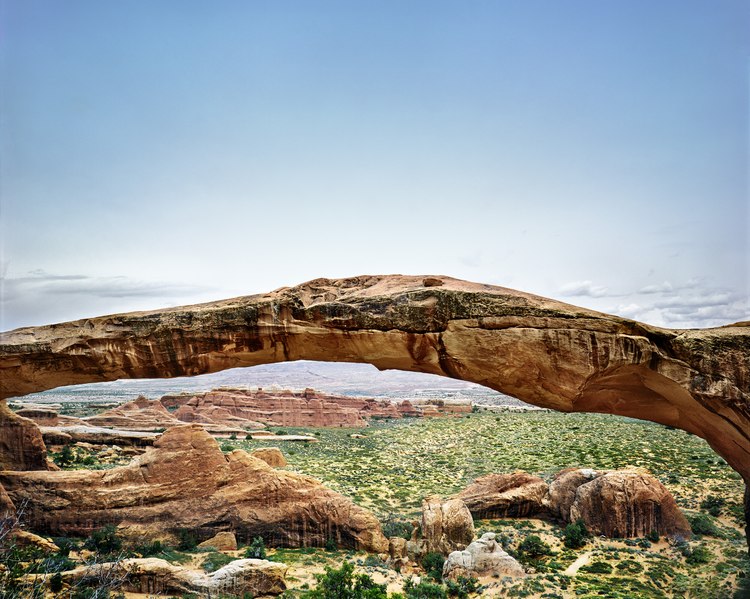Utah's Arches National Park was one of the first places I photographed in the western United States. Compared to New England’s forests and shorelines, where I grew up, this part of the continent felt overwhelming. Even after initially viewing the more prominent arches, I found it difficult to comprehend that these extraordinary formations were created through erosion. Inspired by its name, I hiked up the steep slope under Landscape Arch to an elevated viewpoint, where it appeared to hover above the landscape.
Spanning 306 feet, this arch is one of the longest in the world and one of the most precariously suspended rock spans. During mid-afternoon on September 1, 1991, a hiker heard sounds emanating from the arch. Ascending to where I had taken this photograph a decade earlier, he noted, "I heard again the cracking noises of rocks hitting against the other. The sandstone, however, did not come to rest until a larger amount of rock fell with a loud cracking noise."
This rockfall was the first of three over the next few years. Arches respond to daily and seasonal temperature fluctuations, and earth tremors intermittently shake them. The most durable arches are domed, while the less vaulted ones, such as Landscape Arch, are more susceptible to collapse. As a result of the rockfalls in the 1990s, the diameter of a portion of the left side of this arch was thinned to six feet. While it may have been strengthened by the loss of the weighty slabs that fell, it may have also been further weakened by its diminished thickness. Ultimately, a tremor or a sharp swing in temperatures will lead to its eventual collapse.
Location research and commentary by James Baker.

